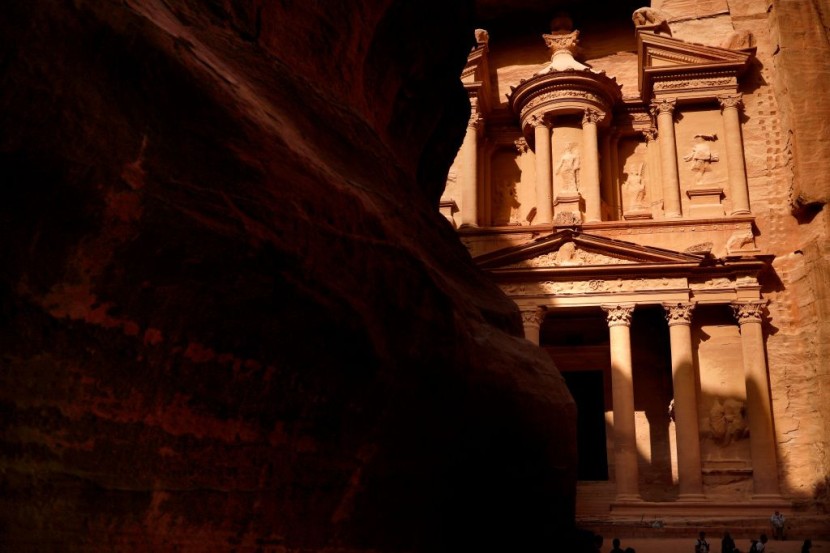
Unique stone eye idols were uncovered by Archeologists who found them in the Ancient City of Petra, they still have analyzed their significance in this ancient society.
The city used to be the center of the Middle East when it held sway as a center of the ancient world.
It controlled politics, financial matters, and pervading culture as an outpost for trading by the Nabateans who dominated this part of the old world.
Power and Prestige
Soon Petra became popular far and wide as traders, and other guilds chose the carven stone city to stay in. The Nabateans, the administrators who got rich from politics and trade, reported the Express UK.
Situated in between what is known as Jordan and Israel in modern times, as one of the flourishing centers of an ancient civilization.
It did not take long for marauding states to want to possess and rule the city. One of the most desired places was rich and powerful as well.
Greeks tried to control it and failed, but the organized Romans lay siege to Petra and defeated the Nabateans to co-opt it into their empire, cited History.
Rome controlled the stone city for 250 years until a quake in its 250th year would damage the structure and everything else. A decline would be inevitable as the one glorious city would be forgotten.
The ancient city of Petra would never become splendid again; instead, be forgotten dusty in the acres of desert with its stone eye idol waiting from centuries. It was an occasional visit by nomads with livestock to stay in its walls for shelter.
Finding a lost city
It was not for Swiss traveler Johann Ludwig Burckhardt, who sought it out at the start of the 19th century via tales of it from sources. Scientists marvel at how the Nabateans achieved this feat in the desert.
Some of the finds were stone carved idols, as their gods before religion were formalized among the Nabateans based on special about the ancient metropolis.
Scholars deciphered these representations of gods as three female gods; there are Allat (goddess), Al-'Uzza (all mighty), Manat ( Destiny). These three had temples and shrines dedicated to them.
Dr. Glen Corbett of the Jordan American Centre for Oriental Research remarked the Petra inhabitants had venerated Al-'Uzza as all-omnipotent.
The Temple of Winged Lions is the center of the ancient city, where the city was named after.
According to the narrator, it was here where researchers found the idols. An eye idol was seen there, very well carved and looked like a goddess figure from its looks. The goddess Al-'Uzza in the rubble of a temple; all indicators show that she had many followers.
There must have been a ritual connected to the goddess based on the evidence left, like burning incense and chants associated with the deity.
A podium where the idol was mounted was opened at the climax. Dr. Corbett said it would have more impact that way on the worshipper.
Women as significant participants in the ritual show they have a privileged position in the city. But the Nabateans have few records left, and it's all guesswork. Women held a position of power in the city.
The ancient city of Petra left clues with stone eye idols that displayed a matriarchal streak in one of the most intriguing phases of civilizations in the ancient Middle East.
Related Article: Scholars Studying the Ancient City of Petra Discover Women's Status Was Equal to Men During this Millennia
© 2026 HNGN, All rights reserved. Do not reproduce without permission.








